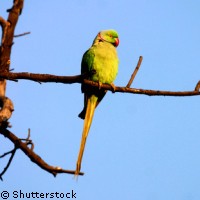The DAISIE project: cataloguing the aliens in our midst
EU-funded researchers have shed new light on the vast numbers of exotic species which have arrived and settled in Europe. Since 2005, members of the DAISIE (Delivering alien invasive species inventories in Europe) project have been putting together an inventory which provides the first ever pan-European overview of over 10,000 non-native animals, fish, birds, plants, insects and other species living in our midst. For each species, the database contains information on the origin of the species, its diet, habitat, date of arrival and its economic and ecological impacts. The full database will be available in around a year's time, when the data contained in it has been published in scientific journals. However, fact sheets on many species are already available on the project website. Many of these species will be familiar to us; almost two-thirds of the species catalogued can be found in man-made or semi-natural environments such as our homes, fields, parks and gardens. They include birds and animals which were intentionally introduced for hunting or fishing, and plants which were imported for our gardens. Examples include the rose-ringed parakeet (Psittacula krameri), whose bright green plumage and distinctive call is now familiar across much of Europe, from the UK in the north to Spain, Italy and Greece in the south. It is feared that these colourful birds could crowd out native species with similar nesting habits, such as the house sparrow, European nuthatch and the European starling. In our waterways, the zebra mussel (Dreissena polymorpha) is causing ecological problems by out-competing native clams and affecting water quality in many lakes, and economic problems by clogging up industrial and municipal water systems and fouling ships' hulls. A particular challenge for the DAISIE researchers was gathering information on alien invertebrates; while there is a strong tradition of recording the incidence and impact of non-native mammals and birds in Europe, the same cannot be said for insects. Alain Roques of the French National Institute for Agricultural Research (INRA) was in charge of the team behind the terrestrial invertebrates section of the database. In total, they gathered data on some 1,517 species. While most vertebrates and plants were introduced deliberately, for hunting, fishing or as ornamental garden plants, for example, most invertebrates got here accidentally. 'We were rather amazed,' Dr Roques told CORDIS News, explaining that they had suspected that many invertebrates were introduced deliberately for biological control. 'Actually it was only 10%, so 90% came as contaminants, for example on imported plants, or as hitchhikers.' A frightening example of such a hitchhiker is the Asian tiger mosquito (Aedes albopictus), which arrived in Europe in small pools of water found in used tyres, for example. It is now widespread in Italy and the western Balkans. The insect, which is native to south-east Asia, is a carrier of a number of nasty diseases, including dengue fever, Chikungunya and West Nile virus. Another surprise for the researchers was the tropical or semi-tropical origin of some 37% of the invertebrates. With temperatures rising in much of Europe as a result of climate change, it is likely that growing numbers of new arrivals from tropical regions will find it easier to adapt to life in Europe, particularly around the Mediterranean. According to Dr Roques, changing trade patterns mean that Asia is now the main supplier of invasive species. Some 30% of exotic invertebrates come from there, and as trade with Asia increases, this figure is set to rise. Changing trends can also affect what is likely to get here; a growing fashion for bonsais means that the tiny trees are now a more important arrival route than logs. Aquarium plants and cut flowers are also important vehicles for hitchhikers. Meanwhile more research is needed to understand the factors which affect the likelihood of a species arriving in Europe, surviving, spreading out and having an ecological, economic or health impact. Greater emphasis also needs to be placed on identifying new arrivals as quickly as possible. 'Usually there is a delay between arrival and the first record of a species,' Dr Roques explains. By the time a species has been identified, it is often too widespread to eradicate easily.



